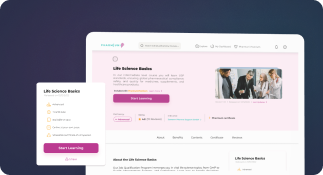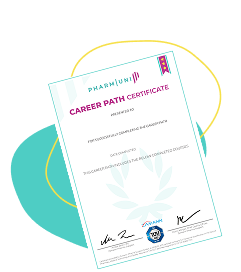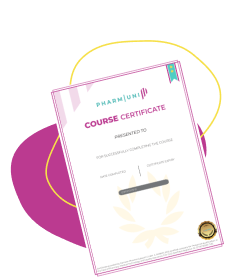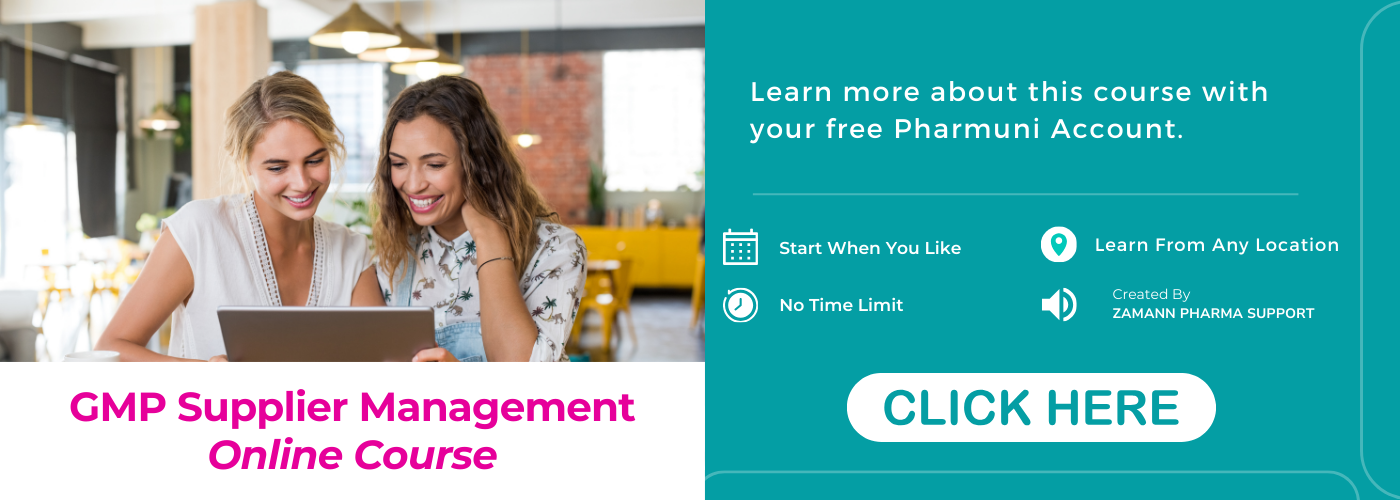Supplier qualification is critical for maintaining high-quality standards, ensuring compliance, and achieving success in today’s increasingly competitive market. The process involves thoroughly assessing suppliers to ensure they meet specific quality, regulatory, and operational requirements. This step is crucial because partnering with subpar suppliers can result in costly product recalls, compliance failures, or significant damage to a company’s reputation. Furthermore, issues like delayed deliveries and non-compliant products can disrupt operations. By following proven practices for supplier qualification, businesses can effectively mitigate risks, enhance operational efficiency, and establish long-lasting relationships with reliable, high-performing suppliers.
This leads to more consistent quality and overall business success.

What is Supplier Qualification?
Supplier qualification involves a detailed process to ensure suppliers meet necessary quality, safety, and regulatory standards. Companies assess their suppliers’ capabilities, certifications, and track records during this process. By doing so, they ensure suppliers can consistently deliver products or services that meet specific requirements. This process is critical for industries like pharmaceuticals, aerospace, and food production, where quality and compliance are crucial.
In industries with strict regulatory requirements, supplier qualification helps minimize risks and ensure smooth operations. Companies need reliable suppliers to avoid compliance issues or production delays.
By regularly evaluating their suppliers, businesses can build strong, long-term partnerships. This systematic process ensures that suppliers maintain the ability to meet industry regulations and deliver high-quality products.
Sign up for GMP Supplier Management Course
Why Supplier Qualification Matters?
Supplier qualification is crucial for maintaining the integrity and reliability of your supply chain. It goes beyond compliance, ensuring smooth operations and safeguarding your company’s reputation. Here are four reasons why supplier qualification matters:
Brand Protection
Qualified suppliers help maintain consistent product quality, which protects your brand’s reputation. Poor supplier performance can lead to product recalls, damaging trust with customers.
Risk Mitigation
Supplier qualification reduces the risk of non-compliance and regulatory breaches. By ensuring suppliers meet industry standards, companies avoid legal penalties and operational disruptions.
Operational Efficiency
Working with qualified suppliers ensures that deliveries meet deadlines and specifications. This contributes to smoother operations and fewer production delays.
Customer Satisfaction
Qualified suppliers produce high-quality products that meet customer expectations. In turn, this improves customer satisfaction and fosters long-term business relationships.
Proven Practices for Supplier Qualification
Define Clear Supplier Qualification Criteria
Defining supplier qualification criteria is the first and most crucial step in ensuring a successful process. To begin, you must ensure that your suppliers align with both your company’s regulatory and quality standards. Start by thoroughly evaluating certifications such as ISO 9001 or GMP, as these reflect the supplier’s commitment to meeting high-quality standards.
Additionally, it’s essential to assess their compliance with industry-specific regulations to avoid any potential legal or operational risks.
Furthermore, financial stability is a critical factor to consider because financially secure suppliers are more likely to meet your long-term business needs. By clearly defining these criteria upfront, you can streamline the qualification process and focus on high-potential suppliers that meet your key requirements.
Moreover, considering the supplier’s capacity and capability to handle your order volumes is equally important. A reliable supplier must not only meet your delivery timelines but also maintain product quality consistently. Alongside these operational factors, it’s essential to consider sustainability and ethical standards, especially in industries that prioritize corporate social responsibility.


Conduct Thorough Supplier Audits
A comprehensive supplier audit plays a vital role in determining whether a supplier meets your operational and quality needs. To begin, this process typically involves visiting the supplier’s facility to closely examine their production processes and quality control systems. By conducting these audits, you can identify any gaps in their operations that may negatively impact your product’s quality. Additionally, it’s essential to evaluate their risk management strategies and confirm that they adhere to industry-specific regulatory guidelines. Through this thorough examination, you can uncover hidden risks and address them before they affect your business operations.
Moreover, supplier audits offer valuable insights into the supplier’s scalability and long-term reliability. It is critical to assess their production capacity to ensure they can meet future increases in demand from your company without sacrificing quality. Furthermore, monitoring their sourcing practices helps confirm that the raw materials they use align with your quality standards. Including your quality assurance team in these audits is beneficial, as their expertise helps identify potential risks early on.
Key Steps in Supplier Qualification
The supplier qualification process involves several critical steps that ensure the reliability and compliance of your suppliers. Below are five key steps to follow:
Initial Supplier Evaluation
Start by gathering essential details about the potential supplier. Review capability statements, financial reports, and past performance records. Conduct a risk analysis to categorize suppliers based on their potential impact on your business.
Request for Proposal (RFP)
An RFP helps confirm the supplier can meet your specific needs. Include product specifications, quality requirements, delivery timelines, and regulatory compliance in the RFP. The more detailed the response, the easier it is to compare suppliers.
Supplier Audit and Site Visit
Conduct a supplier audit to assess their quality systems, processes, and operations. Site visits allow you to identify any issues before they become significant problems. Address concerns immediately and decide whether to proceed with qualification.
Supplier Approval
Once the supplier meets your criteria, approve them as a qualified supplier. Formalize the agreement by defining terms, communication protocols, and quality control expectations. Ensure both parties understand penalties for late deliveries.
Ongoing Monitoring
After approval, continuously monitor the supplier’s performance. Regular audits and performance reviews help identify areas for improvement and maintain a high standard of quality.
Enhancing Supplier Risk Management with Technology
Supplier Risk Management and Audit Tools
Supplier risk management tools give businesses real-time insights into potential risks, making the supplier qualification process more proactive. These platforms allow companies to quickly identify suppliers that may present financial, operational, or regulatory risks. With regular assessments, businesses can detect and address issues before they escalate into costly problems. Additionally, these tools ensure suppliers remain compliant with industry standards, reducing the likelihood of non-compliance and avoiding legal or operational penalties.
In addition to risk management tools, automated audit systems have greatly improved the efficiency of supplier audits. These tools allow companies to schedule, track, and document audits more accurately and consistently. By automating these processes, businesses save valuable time and reduce the potential for human error. Regular audits are essential for ensuring that suppliers continue to meet quality and compliance requirements. Furthermore, this approach allows businesses to focus on high-risk suppliers, ensuring that those who require more frequent monitoring receive appropriate attention. As a result, companies can improve their overall supply chain performance and maintain high operational standards.

Data Analytics and Performance Tracking
Data analytics is transforming the way businesses monitor supplier performance and anticipate future risks. By continuously analyzing critical metrics like delivery times and defect rates, companies can identify patterns and potential issues early. This proactive approach allows businesses to take preventive actions before problems disrupt the supply chain. As a result, data-driven decisions enhance the reliability of supplier relationships and minimize risks that could affect operations.
Moreover, performance tracking tools play a vital role in supporting continuous improvement efforts. These tools provide real-time updates on supplier activities, allowing businesses to easily assess a supplier’s strengths and weaknesses. By monitoring performance consistently, companies can quickly enforce corrective actions when necessary, ensuring that suppliers continue to meet expectations. Additionally, this ongoing evaluation fosters better communication between businesses and suppliers, which helps to build stronger, long-term partnerships. With continuous monitoring and timely interventions, businesses can maintain high-quality standards, improve supplier relationships, and safeguard supply chain stability.
Common Challenges in Supplier Qualification
Despite having a structured supplier qualification process, several challenges can arise:
Supplier Non-Compliance
Suppliers may fail to meet your company’s standards, especially regarding regulatory requirements. Non-compliance can lead to production delays and increased risks of product recalls.
Lack of Supplier Transparency
Some suppliers may withhold critical information, making it difficult to assess their true capabilities. Insist on transparency from suppliers and conduct audits regularly.
Changing Regulations
Regulations are constantly evolving, and keeping suppliers up to date with these changes can be a challenge. Ensure your suppliers are aware of any new or modified regulations and can adjust their processes accordingly.
Pro Tip: Partner with suppliers who have a history of staying ahead of regulatory changes. Suppliers with strong compliance departments are typically more reliable in maintaining ongoing compliance.
Conclusion
Supplier qualification is a vital process that ensures companies collaborate with the best suppliers to maintain product quality and regulatory compliance. By adopting proven practices such as conducting supplier audits, implementing performance monitoring systems, and using technology, businesses can reduce risks, improve operational efficiency, and build strong supplier partnerships.
Ensuring consistent supplier qualification also mitigates compliance risks, particularly in highly regulated industries like pharmaceuticals or aerospace. Businesses that prioritize supplier qualification set the foundation for long-term success and supply chain reliability.
References

Ershad Moradi
Ershad Moradi, a Content Marketing Specialist at Zamann Pharma Support, brings 6 years of experience in the pharmaceutical industry. Specializing in pharmaceutical and medical technologies, Ershad is currently focused on expanding his knowledge in marketing and improving communication in the field. Outside of work, Ershad enjoys reading and attending industry related networks to stay up-to-date on the latest advancements. With a passion for continuous learning and growth, Ershad is always looking for new opportunities to enhance his skills and contribute to pharmaceutical industry. Connect with Ershad on Facebook for more information.

Pharma Industrial Training Certificate: Career Outcomes, Jobs, and ROI (2025)
A Pharma Industrial Training Certificate can significantly enhance your career in the pharmaceutical industry. This certificate equips you with hands-on experience in Good Manufacturing Practices (GMP), documentation, and manufacturing processes—skills that are directly applicable in various pharmaceutical roles.

Certificate in Pharmaceutical Manufacturing: Complete Career Guide (2025)
A Certificate in Pharmaceutical Manufacturing gives you a fast, structured way into GMP-based production roles. You learn core topics such as GMP rules, manufacturing processes, documentation, and QA/QC. In 6–12 months, you move from theory to shop-floor skills and boost your chances of landing a stable pharma job.

Computer System Validation in Pharma 2025 Guide
Computer System Validation in pharma keeps your digital systems reliable, compliant, and inspection ready. In this practical CSV guide for 2025, you learn core regulations (21 CFR Part 11, EU Annex 11, GAMP 5), step-by-step lifecycle activities, documentation expectations, and job-relevant skills so you protect data integrity and support safe, efficient pharmaceutical operations.




